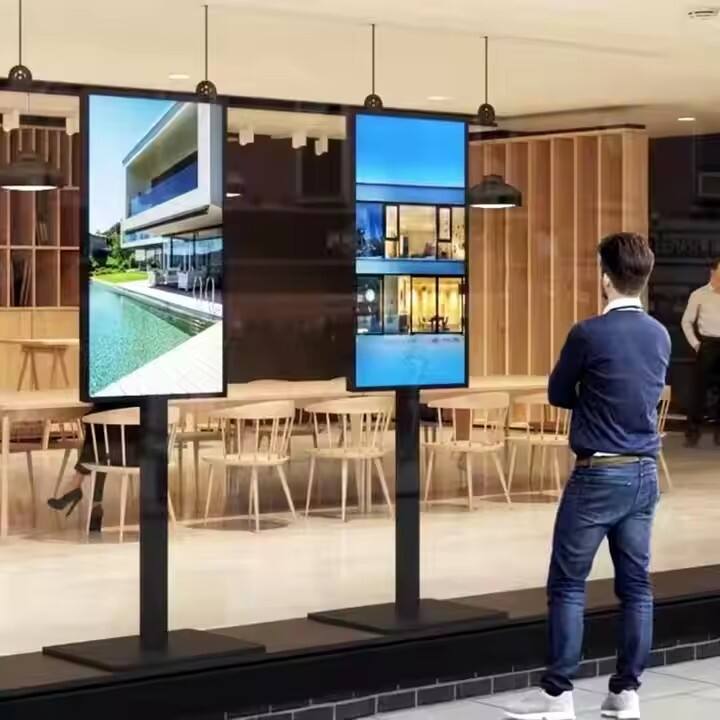Understanding Sunlight Readability in Modern Display Technology
The challenge of reading displays outdoors has long been a critical concern for both manufacturers and users. High brightness LCD displays represent a significant advancement in tackling this persistent issue, offering enhanced visibility even under direct sunlight. These specialized displays have transformed how we interact with screens in outdoor environments, from digital signage to mobile devices.
The technology behind high brightness LCD displays involves sophisticated engineering that goes beyond simply increasing the backlight intensity. These displays incorporate various features and innovations that work together to ensure optimal visibility in challenging lighting conditions while maintaining image quality and energy efficiency.
Core Technologies Behind High Brightness LCD Displays
Advanced Backlight Systems
The foundation of high brightness LCD displays lies in their advanced backlight systems. Modern displays utilize high-output LED arrays that can produce luminance levels ranging from 1,000 to 5,000 nits or more. This significant boost in brightness directly contributes to improved sunlight readability, as the display can effectively compete with ambient light levels.
These advanced backlight systems are carefully calibrated to maintain color accuracy while delivering the necessary brightness. The implementation of local dimming technology allows for dynamic adjustment of backlight intensity across different screen areas, optimizing both visibility and power consumption.
Anti-Reflective Treatments
High brightness LCD displays incorporate sophisticated anti-reflective treatments that significantly reduce glare and reflections. These treatments typically consist of multiple optical layers that work together to minimize light reflection while maximizing light transmission from the display itself.
The anti-reflective coating technology has evolved to include both chemical and physical treatments that can reduce surface reflection to less than 1%. This advancement ensures that most of the display's output reaches the viewer's eyes rather than being lost to reflection.

Performance Factors in Outdoor Environments
Brightness Level Requirements
The effectiveness of high brightness LCD displays in outdoor settings depends largely on their ability to overcome ambient light. For optimal sunlight readability, displays typically need to achieve a minimum brightness level of 800-1000 nits, with many outdoor applications requiring even higher levels.
Environmental factors such as direct sunlight, which can reach intensities of up to 100,000 lux, make it essential for displays to maintain high brightness levels consistently. The most advanced high brightness LCD displays can achieve this while incorporating automatic brightness adjustment features to optimize power consumption.
Contrast and Color Management
Superior contrast ratios are crucial for sunlight readability in high brightness LCD displays. These displays employ advanced polarization filters and optical bonding techniques to maintain strong contrast even under intense ambient light conditions.
Color management systems in these displays are specifically calibrated to compensate for the wash-out effect often experienced in bright environments. This ensures that colors remain vibrant and accurate, contributing to overall readability and visual quality.
Implementation Considerations
Thermal Management Solutions
Operating high brightness LCD displays at elevated brightness levels generates significant heat, requiring sophisticated thermal management solutions. Manufacturers implement various cooling mechanisms, including heat sinks, fans, and thermal conductivity materials, to maintain optimal operating temperatures.
Advanced thermal management systems not only protect the display components but also ensure consistent performance and longevity. This is particularly important in outdoor installations where ambient temperatures can fluctuate significantly.
Power Efficiency Innovations
Despite their high output capabilities, modern high brightness LCD displays incorporate various power-saving features. These include ambient light sensors that automatically adjust brightness levels and energy-efficient LED technologies that maximize luminance while minimizing power consumption.
The latest generation of displays also utilizes intelligent power management systems that can optimize energy usage based on content and viewing conditions, making them more sustainable for long-term outdoor deployment.
Applications and Use Cases
Commercial Digital Signage
High brightness LCD displays have revolutionized outdoor advertising and information display capabilities. These displays provide excellent visibility for digital billboards, transit information systems, and retail storefront displays, regardless of ambient light conditions.
The ability to maintain readability throughout the day has made these displays invaluable for delivering dynamic content in public spaces, significantly improving the effectiveness of outdoor digital communication.
Industrial and Military Applications
In industrial and military settings, high brightness LCD displays serve critical functions where reliable visibility is essential. These displays are used in control rooms, vehicle displays, and portable equipment where operators need clear visibility in varying light conditions.
The robust design and superior readability of these displays make them ideal for mission-critical applications where information must be clearly visible at all times, regardless of environmental conditions.
Frequently Asked Questions
How do high brightness LCD displays compare to standard displays?
High brightness LCD displays typically offer 3-5 times the brightness level of standard displays, with specialized models reaching up to 10 times higher brightness levels. They also incorporate advanced anti-reflective technologies and thermal management systems that standard displays lack.
What is the typical lifespan of a high brightness LCD display?
When properly maintained, high brightness LCD displays can operate effectively for 50,000 to 100,000 hours, depending on usage conditions and brightness levels. Regular maintenance and appropriate thermal management can significantly extend their operational life.
Can high brightness LCD displays be energy efficient?
Yes, despite their higher brightness output, modern high brightness LCD displays incorporate various energy-saving features such as ambient light sensors, local dimming technology, and advanced power management systems to optimize energy consumption while maintaining visibility.

